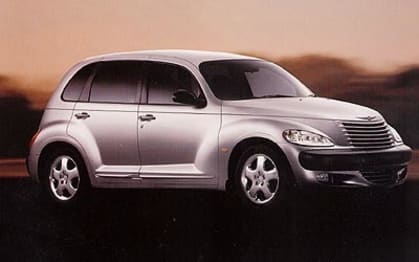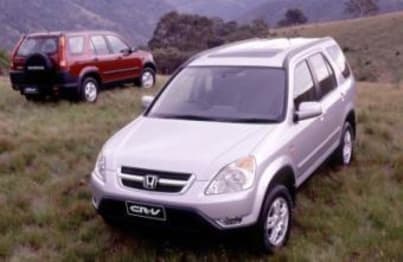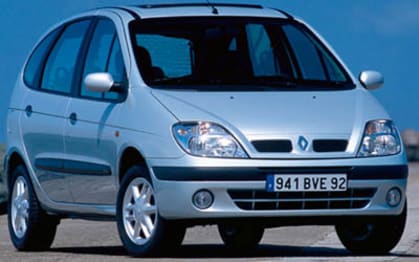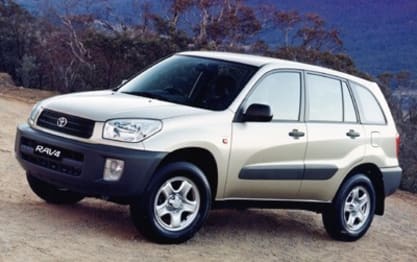
Used Chrysler PT Cruiser review: 2000-2003
- Chrysler PT Cruiser
- Chrysler PT Cruiser 2000
- Chrysler PT Cruiser 2001
- Chrysler PT Cruiser 2002
- Chrysler PT Cruiser 2003
- Chrysler PT Cruiser Reviews
- Chrysler Reviews
- Chrysler Wagon Range
- Wagon
- Chrysler
- Used Car Reviews
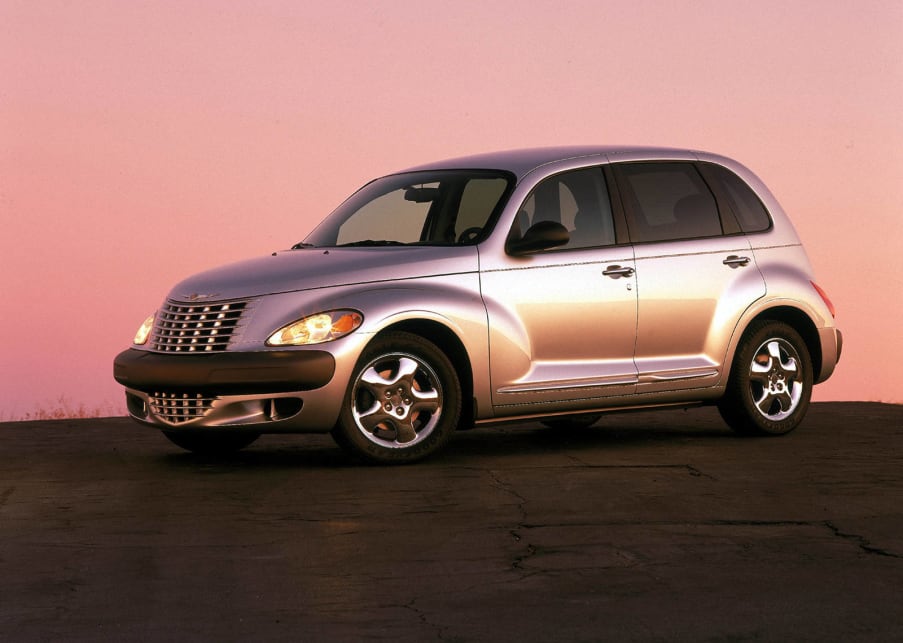
Chrysler trod a different styling path when it took a retro turn in the late 1990s. It was a calculated gamble to revive its struggling brands by tapping into a nostalgia craze that swept parts of the world, particularly America where cars like the Dodge Viper, Plymouth Prowler and Chrysler PT Cruiser were greeted with wild enthusiasm.
Retro styling was always going to be gamble because there was always the possibility that its popularity would pass as fast as it struck, but there could be no doubt about its success in focussing attention on the company’s cars.
While the Viper and the Prowler were tightly targeted at specific, and quite small markets, the Cruiser had broader appeal that took it beyond those who simply wanted a cool looking car that reminded them of their long lost youth.
It might have looked like a 1930s panel van, but the Cruiser also boasted a versatile interior layout that made it a winner with a broad cross-section of buyers who needed family transport, a weekend escape wagon, or a part-time cargo carrier. Businesses also found it a perfect promotional vehicle, its cute retro looks attracting attention wherever it went.
MODEL WATCH
Chrysler designers unashamedly looked to the 1930s for their inspiration for the PT Cruiser. They’d wowed show crowds with their modern interpretation of the American hot rod with the Plymouth Prowler, which for a time revived interest in the Plymouth brand, and the Cruiser was conceived to do the same thing for Chrysler, which was also struggling to appeal to younger buyers.
Baby boomer Tom Gale led the design team responsible for Chrysler’s retro cars. Gale was also a hot rodder so it was no surprise when his cars had elements of the great American cars of the past.
The Prowler recalled Ford roadsters of the early-1930s, some argue that its inspiration was the classic 1934 Ford, others that it was the 1937 roadster, and the Cruiser’s shape seemed to recall late-1930s Ford panel vans. The Cruiser’s grille, bonnet, bumpers, running boards and overall profile were clear reminders of the 1937 Ford panel van.
It wasn’t a panel van; it was a five-door wagon, a small peoplemover of sorts. That it was a peoplemover shouldn’t be surprising really, Chrysler was the leading maker of peoplemovers, minivans to our American cousins, in the US.
The company had created the market segment and was the acknowledged leader, so in many ways the Cruiser simply extended the reach of the peoplemover to those who wanted a smaller vehicle. The designers’ stated aim was to produce a car with the external dimensions of a small car and the interior space of a much larger vehicle.
The key to the Cruiser’s appeal was its clever interior, which in a matter of a few seconds could be converted from a one-passenger cargo carrier to a full five-seater family wagon. It was all thanks to its seats, which could be moved, folded or even removed. In total Chrysler claimed there were more than 25 possible seating configurations.
It might have looked like it belonged in the past, but in fact it was a very modern interpretation of the motorcar. While Americans could buy a Cruiser with a torquey 2.4-litre engine, all export markets, including Australia, had to make do with a smaller 2.0-litre unit, which was a pity as the 2.4-litre engine gave the Cruiser more zip and more flexibility.
The 2.0-litre engine was a double overhead camshaft fuel-injected unit with four valves per cylinder, which put out 104 kW at 5600 revs and 186 Nm at 4400 revs. Buyers could choose from a five-speed manual or four-speed auto.
Performance was adequate for a small car such as the Cruiser was, although its looks suggested it was more of a performer. Its ride was comfortable, it handled predictably and with precision, and four-wheel disc brakes with ABS ensured it stopped well.
Chrysler offered the Cruiser in two models, the Classic and Limited. Included in the Classic were dual frontal airbags, air-conditioning, remote central locking, power windows, CD player, traction control, power driver’s seat height adjustment. Add to that front side airbags, chrome alloys, suede/leather trim, front fog lights and a leather wrapped wheel and you had the Limited.
Anyone who felt particularly nostalgic could add one of a number of graphics kits Chrysler offered. These ranged from stripes and scallops to flames.
IN THE SHOP
Early cars are approaching the first major service, which will require a timing belt change so be aware of the extra cost of that service. Generally the Cruiser seems to give little trouble, the engine and gearbox stand the test of time quite well.
Take a look under the oil filler cap for signs of sludge that would indicate missed services, also remove the oil dip stick and check the state of the oil in the sump. The oil should be clear, not dark or with obvious contaminants.
When driving observe the automatic transmission for heavy shifts or flaring during shifts, make sure the manual shifts smoothly. Also on manuals make sure there’s some free play at the top of the clutch pedal travel, and that the clutch fully releases.
No free play may mean the clutch will soon need replacing. Carefully inspect the interior for signs of damage due to heavy commercial use.
IN A CRASH
The Cruiser has a well-proven chassis package with four-wheel discs, along with ABS and traction control for crash avoidance, and an array of airbags for protection in the crunch.
All models feature front airbags for the driver and front seat passenger, the Limited also boasts front side airbags for added protection of driver and front seat passenger in the event of a side impact.
OWNERS SAY
Paul Lynch and Peter Dillon were Chrysler nuts that reckoned the Cruiser was the perfect promotional vehicle for their carpet business.
“It’s a cool looking car,” says Lynch. “It was like the ‘R’ and ‘S’ Series Valiants in the 1960s, which were like space ships when they were launched. They still look wild today.
“I liked the Cruiser’s retro looks, it’s great for advertising and has paid for itself already.”
They bought one when they first came out in 2000, optioned it with everything they could, including the flame graphics package. It’s now done around 100,000 km and has given them no trouble at all, it even still has the original brakes.
LOOK FOR
• Cute retro styling can be a turn-on for some buyers, but a turnoff for others
• Modest performance from 2.0-litre engine
• Safe and sound front-wheel drive chassis dynamics
• Comfortable ride
• Brilliantly flexible interior
• Generally reliable mechanics
THE BOTTOM LINE
Worth a look if you need a vehicle that can be used for a multitude of uses, but its standout styling means you must be able to live in the spotlight.
RATING
65/100
Pricing
| Year | Price From | Price To |
|---|---|---|
| 2003 | $3,410 | $7,920 |
| 2002 | $3,410 | $6,820 |
| 2001 | $3,410 | $6,820 |
| 2000 | $3,410 | $6,820 |
Pricing guides
Range and Specs
| Vehicle | Specs | Price* | |
|---|---|---|---|
| Classic | 2.0L, ULP, 4 SP AUTO | $3,850 – 5,720 | 2000 Chrysler PT Cruiser 2000 Classic Pricing and Specs |
| Limited | 2.0L, ULP, 4 SP AUTO | $4,620 – 6,820 | 2000 Chrysler PT Cruiser 2000 Limited Pricing and Specs |
Other cars to consider
$3,850
Lowest price, based on third party pricing data



